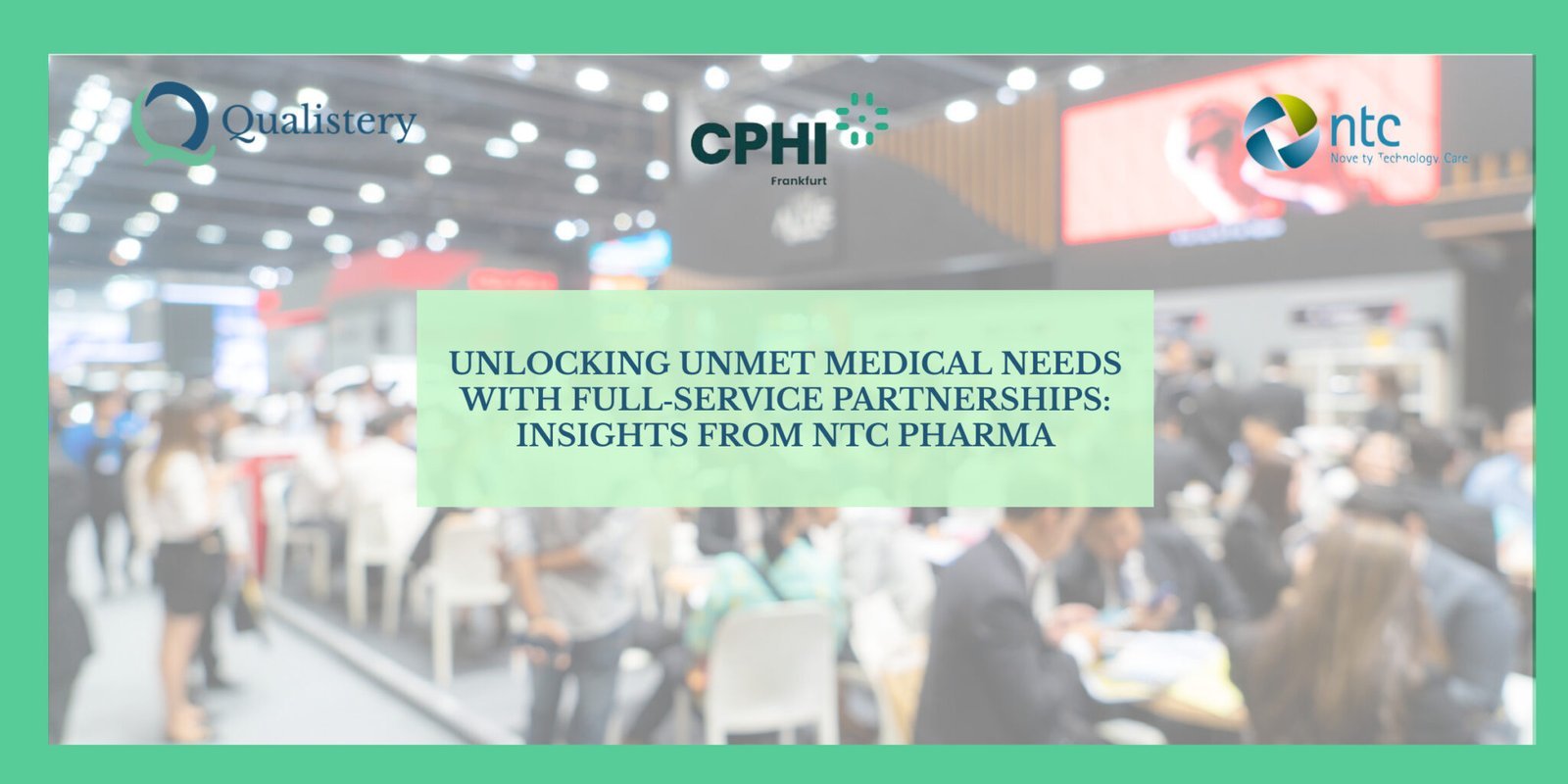Introduction
In the last years, the European pharmaceutical and medical technology industries experienced a significant shift in regulatory standards, a change that is poised to notably alter the framework within which healthcare innovation operates. These changes also show the direction that regulators will take in the following years. So, it is imperative for industry professionals to be aware of the changes and prepare for the ones that could come in the future.
This article delves into the heart of these regulatory shifts, dissecting the updates and expansions that will test the resilience and adaptability of the industry. We will talk about the following regulatory updates:
1) ICH Q9’s new revision
2) The new EU GMP Annex I
3) AI in QA
4) Remote QP batch release
5) Stricter MedTech regulations: EU 2017/745 and EU 2017/746
6) From the Clinical Trials Directive to the Clinical Trial Regulation
The process of adapting to these (and future) regulations is an immediate concern, one that will significantly influence the direction and success of the pharma and MedTech sectors in the upcoming years.
Join us as we explore this situation.
1) The Sophistication of Risk Management: ICH Q9’s Update
The updated ICH Q9, now referred to as ICH Q9(R1) and set to be effective from July 2023, presents the pharmaceutical industry with new challenges in Quality Risk Management (QRM). A fundamental shift introduced by this revision is the move from “Risk Identification” to “Hazard Identification.” This evolution requires the industry to conduct a thorough hazard analysis as a foundational step, thereby promoting a more preemptive stance in the risk management process.
Moreover, ICH Q9(R1) brings clarity to the “formality” aspect of QRM, acknowledging that it encompasses a broad spectrum and insisting on its adaptability to meet varying circumstances. The updated guideline provides some structure to ascertain the appropriate level of formality in QRM efforts, based on factors such as Uncertainty, Importance, and Complexity of the processes involved. This means that regulators will focus more on the justification of the degree of formality used.
By spotlighting the elements of risk assessment that are most susceptible to subjective judgments, ICH Q9(R1) compels the industry to recognize and mitigate biases, calling for a more systematic risk assessment methodology.
2) EU GMP Annex I: Where Sterile Manufacturing Meets Precision
The 2022 update to EU GMP Annex 1, focusing on sterile manufacturing, marks a significant expansion, growing from 16 to 59 pages. This extensive revision reflects a more detailed and comprehensive approach to maintaining sterility in pharmaceutical production.
Part 2, titled “Principle,” now places a strong emphasis on a well-articulated contamination control strategy, underscoring a proactive approach to sterile manufacturing. Additionally, Part 3, “Pharmaceutical Quality System,” meticulously outlines the requisites of an effective system as applied to sterile manufacturing, establishing a robust quality framework throughout the production process.
The sections dedicated to premises and utilities have been expanded to provide a more detailed guideline.
The article also accentuates the importance of well-informed and trained staff in sterile manufacturing and Quality Control, underlining their critical role in upholding the highest standards of quality and safety.
The Environmental and Process Monitoring section has been given a central place, providing comprehensive descriptions of the meticulous methods for monitoring and documenting processes within cleanroom environments. This emphasis ensures a heightened level of control and safety in the production space.
The expansion of the document underscores a shift towards a more proactive and detailed contamination control strategy. It demands a heightened level of precision and vigilance in every aspect of the production process, from the quality systems to the training of personnel. As the guidelines become more intricate, the industry is tasked with elevating its standards to meet these rigorous requirements, ensuring the safety and efficacy of sterile pharmaceutical products.
3) Navigating the AI Frontier in QA: Balancing Innovation with Compliance
AI in Quality Assurance (QA) is reshaping the pharmaceutical landscape.
By harnessing Artificial Intelligence (AI), QA teams can now analyze vast quantities of manufacturing data with unprecedented efficiency. Through powerful machine learning algorithms, AI identifies patterns, spots anomalies, and offers insights to assist Qualified Persons (QPs) in their review process, including deviations and investigations.
Real-time monitoring of critical parameters is another game-changing application, empowering manufacturers to make swift, well-informed decisions.
An example of this is AI’s predictive maintenance capabilities forecast equipment issues before they occur, reducing downtime and boosting productivity. This proactive approach not only ensures equipment longevity but also creates a more reliable manufacturing environment, marking a significant leap forward in industry excellence.
As AI continues to advance, it also holds the potential to autonomously generate reports like the Product Quality Review (PQR), promising heightened efficiency and precision in QA processes.
Nonetheless, it’s important to note that AI’s rapid progress brings both opportunities and challenges. The industry should watch closely how regulators navigate this technological frontier, as they will seek a balance between innovation and security.
4) Remote QP Batch Confirmation in the EU: Navigating the New Landscape
In response to the ever-evolving pharmaceutical landscape, the European Medicines Agency (EMA) issued vital updates in July 2023, addressing the pivotal issue of remote Qualified Person (QP) batch release. This initiative provides much-needed clarity and guidance on the conditions and prerequisites for QPs certifying and confirming batches remotely.
Approval for remote QP batch depends on the national competent authority overseeing the authorized site. Both manufacturers and QPs must adhere to any specific national requirements.
Furthermore, remote QP certification must strictly comply with EU legislation and guidelines for a regular on-site batch release:
This process must take place within the EU/EEA or Northern Ireland, verifiable through technical means. QPs must maintain a comprehensive knowledge base covering product, manufacturing processes, and the pharmaceutical quality system, ensuring a robust reliance on the relevant system. This commitment may even entail on-site presence when necessary.
EMA underlines that implementing remote QP batch release necessitates a well-defined, controlled approach within the pharmaceutical quality system. The technical agreement between the Marketing and Importation Authorisation (MIA) holder and the QP should explicitly outline provisions for remote certification, including specific circumstances mandating the QP’s physical presence.
Ensuring QPs have access to essential information for informed decisions, in line with Annex 1 directives, falls under the responsibility of the MIA holder. This includes providing necessary equipment and IT system compliance as per EU GMP Annex 11. Rigorous compliance verification, such as self-inspections, upholds the integrity of the batch release process.
To seize the opportunity presented by the EMA’s updates for remote Qualified Person (QP) batch release, the pharmaceutical industry must actively work towards adapting and upgrading its systems. This is not a passive shift; it necessitates deliberate efforts to reassess existing protocols, implement cutting-edge technological solutions compliant with EU GMP Annex 11, and embrace a proactive stance to uphold—and possibly enhance—the established quality and compliance standards. Companies must be willing to invest time, resources, and strategic planning to make the most of this development. By doing so, they can turn this regulatory evolution into a competitive advantage, streamlining operations while continuing to safeguard public health.
5) Stricter Medtech regulations
The regulations EU 2017/745 on medical devices (MDR) and EU 2017/746 on in vitro diagnostic medical devices (IVDR) represent a substantial overhaul of the previous regulatory framework for medical devices in the European Union. The story behind these regulations is rooted in a response to global advancements in medical technologies and the need to address significant gaps in the previous directives, especially in the wake of high-profile safety issues such as the PIP breast implant scandal.
Prior to the MDR and IVDR, the medical device sector in the EU was governed by three directives: the Medical Devices Directive (MDD), the In Vitro Diagnostic Medical Devices Directive (IVDD), and the Active Implantable Medical Devices Directive (AIMDD). However, these directives were adopted in the 1990s and had become outdated due to technological advances and changes in the understanding of medical device safety.
The new regulations were driven by a need to:
– Enhance patient safety and ensure a high level of health protection.
– Create a robust, transparent, and sustainable regulatory framework that is adaptable to scientific and technological progress.
– Ensure the legal certainty and clarity for manufacturers and other stakeholders.
– Strengthen the rules on placing devices on the market and tighten surveillance once they are available.
– Improve traceability of medical devices throughout the supply chain to ensure rapid and effective responses to safety concerns (e.g., through a Unique Device Identification system).
– Introduce specific regulations for aesthetic devices that have the same characteristics and risk profile as medical devices.
What Changes with the MDR and IVDR:
– A new and broader definition of what constitutes a medical device.
– More rigorous pre-market assessment of high-risk devices.
– Enhanced post-market surveillance requirements.
– Increased responsibilities for manufacturers, importers, and distributors.
– Stricter control of notified bodies (the organizations that assess medical devices) and more rigorous procedures for their designation.
– The creation of a comprehensive and public EU database on medical devices (EUDAMED).
Both regulations included a transitional period to allow manufacturers, notified bodies, and national authorities time to comply with the new rules. The MDR entered into force on 25 May 2017 with a transitional period of three years, while the IVDR followed on 26 May 2017 with a transitional period of five years.
However, the COVID-19 pandemic and feedback from various stakeholders revealed that the timeframe was challenging, particularly due to a bottleneck in capacity among notified bodies. As a result, the European Commission proposed, and the Parliament and the Council agreed to extend the transitional period. The transitional deadlines were staggered based on the class of the medical device to allow an orderly transition and to avoid shortages of medical devices on the market.
For the MDR, the extended transition period is until 202 for certain devices, with further staggered deadlines for high-risk devices up until 2027 or 2028. For the IVDR, the extended transition period is until 202 for certain high-risk devices, with additional extensions for other specific device classes.
The extension of the transitional period for the implementation of EU regulations 2017/745 and 2017/74 should not be perceived as a relaxation of regulatory intent. Instead, it illustrates the European Union’s determination to elevate the regulatory standards within the medical technology industry. This forward momentum signals a clear direction towards stricter regulation in the future. Stakeholders across the industry spectrum should interpret these developments as a call to action, prompting immediate steps towards aligning with these higher benchmarks of safety, efficacy, and quality. Proactive preparation now will be crucial for ensuring compliance with the inevitable rigor of future regulatory landscapes.
6) New regulations in Clinical Research
The transition from the Clinical Trials Directive (CTD) to the Clinical Trials Regulation (CTR) within the European Union is a narrative of evolving regulatory standards in response to the complexities and growth of clinical research. The CTD, formally known as Directive 2001/20/EC, was adopted in April 2001 and came into force in May 2004. It was the first attempt to harmonize the assessment and supervision processes for clinical trials throughout the EU. The directive aimed to ensure a high level of human health protection and the smooth functioning of the internal market.
However, the CTD was criticized for leading to increased administrative burdens and delays in launching clinical trials, which had an adverse effect on the EU’s competitiveness in clinical research. The directive’s transposition into national laws led to divergent interpretations and applications, which hampered the harmonization it sought to achieve.
Recognizing the need for a more robust and harmonized legal framework, the European Commission proposed a regulation that would be directly applicable across all EU member states, eliminating the inconsistencies resulting from the transposition of the CTD into national laws. After extensive discussions and revisions, the Clinical Trials Regulation (EU No 536/2014) was adopted in April 2014.
The CTR introduces several key improvements:
– A unified electronic submission and assessment process for clinical trial applications via a single EU portal.
– Simplified reporting procedures, reducing administrative burdens for sponsors and researchers.
– Increased transparency of trial information, with the results being publicly accessible.
– Harmonized rules for the protection of trial subjects and informed consent.
The regulation’s implementation was contingent upon the development of a fully functional EU clinical trial portal and database, which faced several delays. These tools are critical for a centralized application process and public availability of clinical trial data.
The CTR was initially expected to come into force by May 2016, three years after publication. Due to technical challenges in developing the IT systems, the application of the CTR was postponed. It eventually came into effect on 31 January 2022, with a transition period to allow for the adjustment from the CTD to the CTR frameworks.
Until 30 January 2023, sponsors had the option to submit new applications for approval of clinical trials in accordance with either the CTD or the CTR. From 31 January 2023, all new applications for approval of clinical trials must be submitted in accordance with the CTR. Authorization of the clinical trial, may, however, be obtained later. From 31 January 2025, new and ongoing clinical trials in the EU must be conducted in compliance with the CTR.
As the European Union transitions from the Clinical Trials Directive to the more robust Clinical Trials Regulation, it will be crucial for medical technology companies to stay well-informed of both regulatory frameworks in the coming years. The transitional period necessitates a dual understanding of compliance under both the CTD and the CTR. With the CTR set to fully take effect from 31 January 2025, companies should utilize the intervening time to align their processes with the new requirements while still operating under the provisions of the CTD where applicable. A comprehensive grasp of both regulations will be essential to navigate this period of regulatory evolution successfully and to ensure uninterrupted progress in clinical research activities within the EU.
Final words
We recognize that the challenges are many, but so are the opportunities for those prepared to navigate this complex terrain. We invite you to continue exploring these topics with us, staying informed and engaged with our future posts.
Follow us for more in-depth insights of the industry!
Qualistery provides life‑science professionals with concise, practical GxP and cGMP learning through expert‑led webinars and tailored training, helping teams make safer, more compliant decisions. We deliver these sessions in partnership with trusted solution providers, combining real‑world insights and actionable guidance with targeted outreach to the right decision‑makers.







